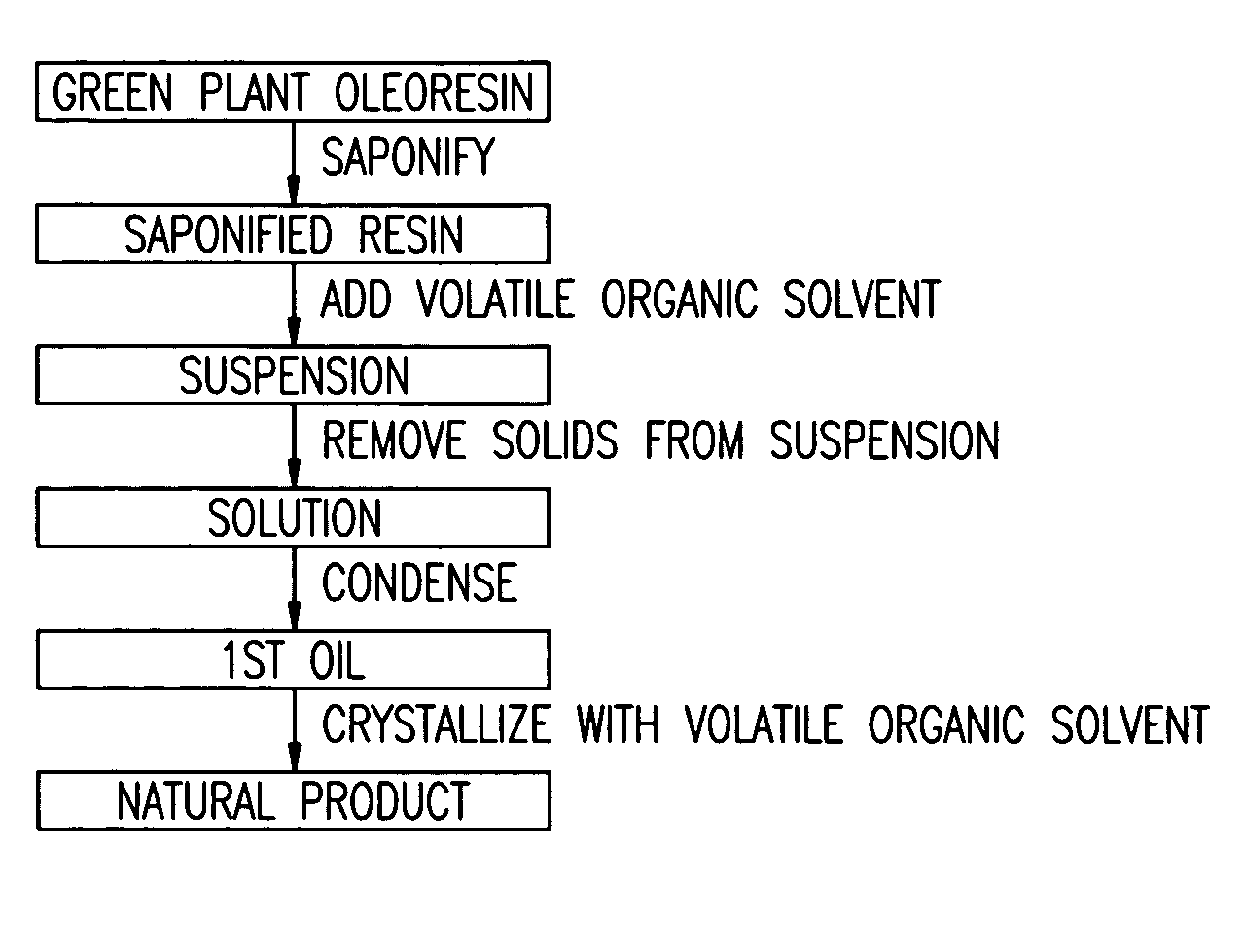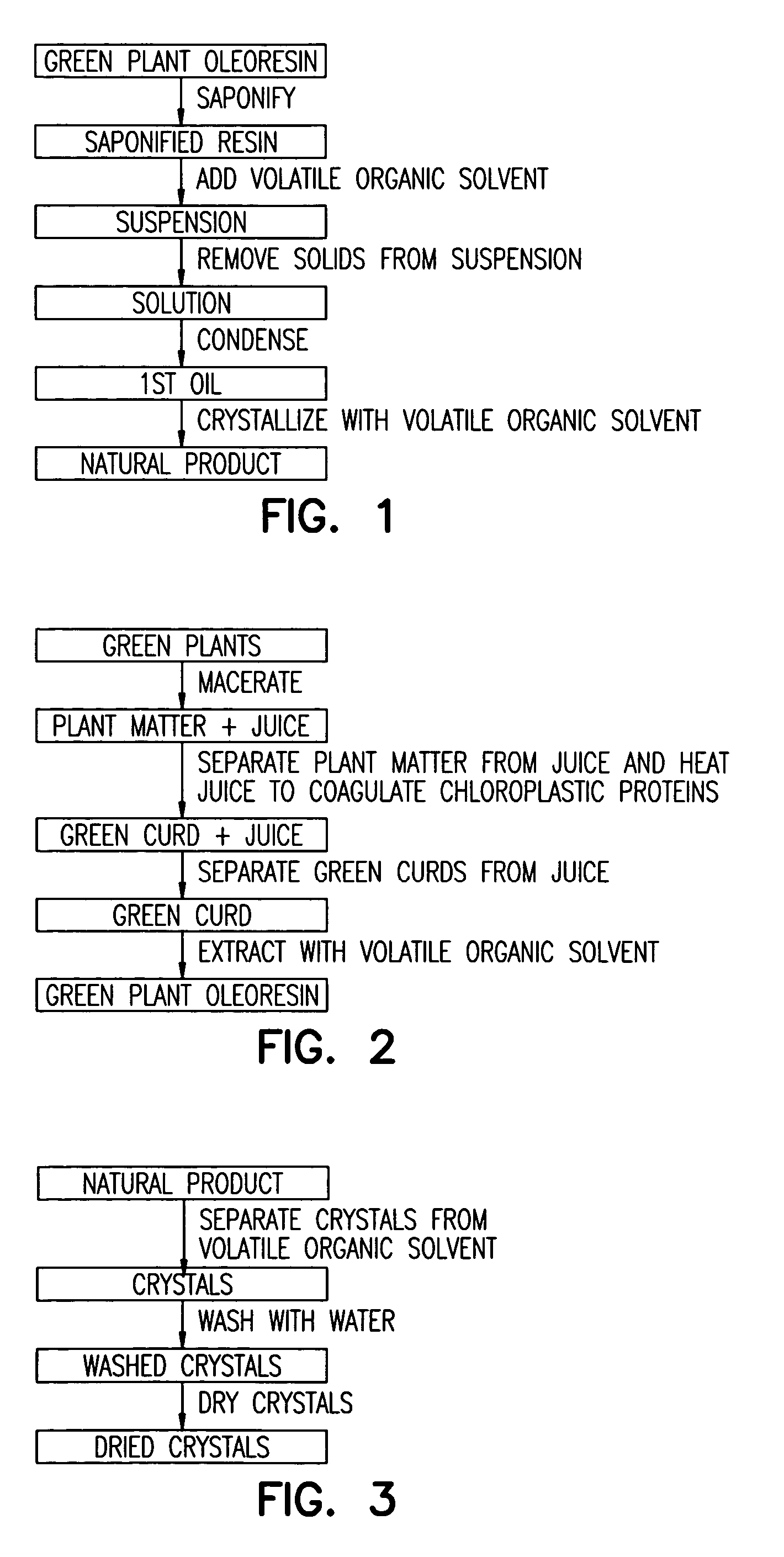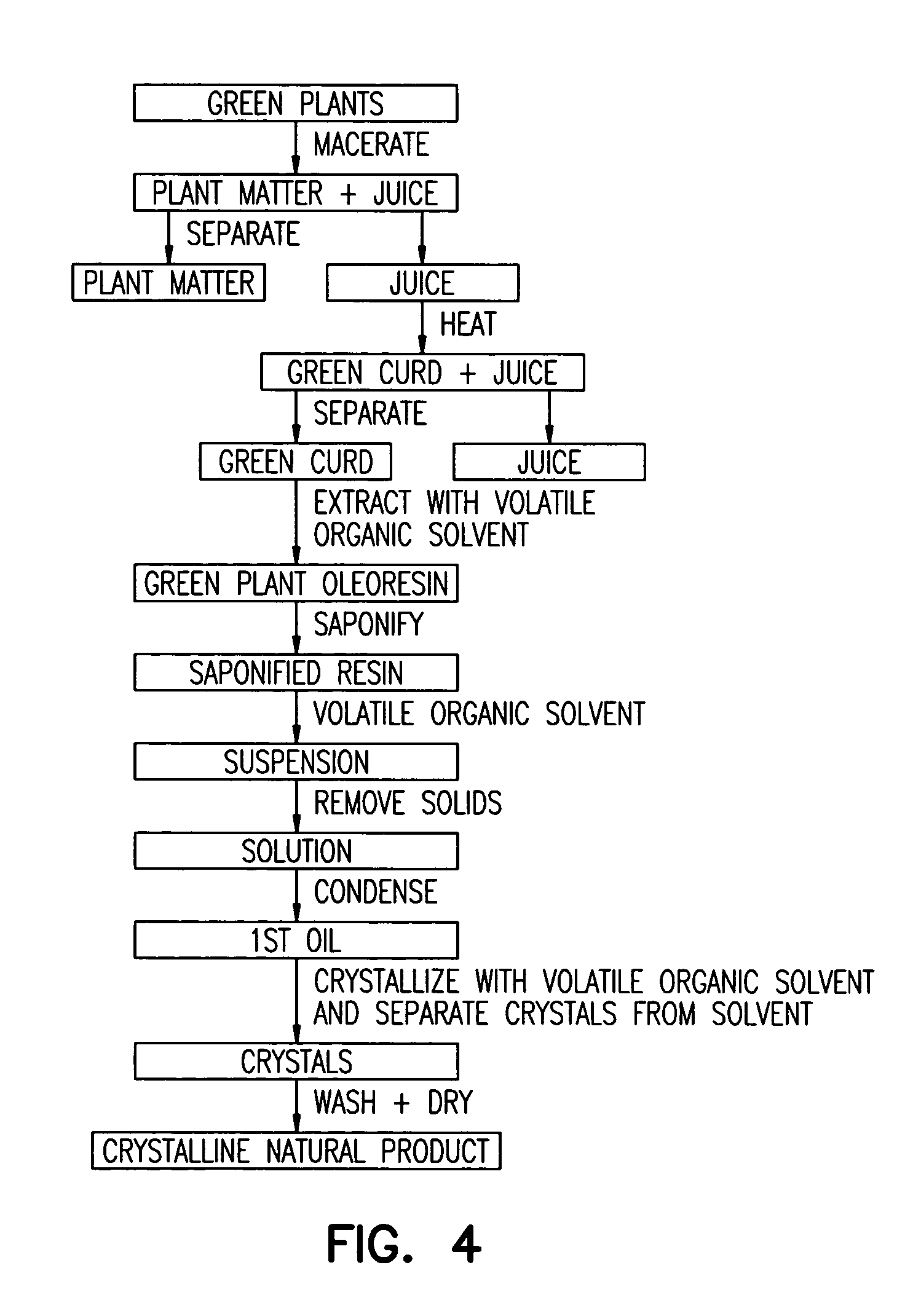Isolation of lutein from alfalfa
a technology of lutein and alfalfa, which is applied in the direction of biocide, cardiovascular disorder, drug composition, etc., can solve the problems of inability to provide an economical process for the production of xanthophylls, previous methods of xanthophylls from natural plants suffer from one or more disadvantages, and achieves the ability and ease of removal of xanthophylls, high yield and purity of natural products, and easy removal
- Summary
- Abstract
- Description
- Claims
- Application Information
AI Technical Summary
Benefits of technology
Problems solved by technology
Method used
Image
Examples
example 1
Process for the Extraction of Lutein from Alfalfa
[0142]10,000 pounds of alfalfa containing 500 ppm of lutein, on a dry basis, were processed according to the disclosed invention. 10,000 pounds is nominally the amount of alfalfa harvested from one acre. After harvesting, the alfalfa was chopped and screened to remove extraneous components, macerated, and the alfalfa juice was expelled. This resulted in 4,000 pounds of pulp and 6,000 pounds of juice. The pH of the juice was adjusted to 7.5 by the addition of 40% aqueous KOH. The quantity of 40% KOH used to adjust the pH was 3.0 gallons. The pH of the fresh, unadjusted juice is about 5.0. The juice was then heated to 180° F. to coagulate chloroplastic protein. The juice / curd slurry was cooled to 80° F. On separation (horizontal bowl decanter centrifuge) of the juice / curd two fractions resulted, 1,500 pounds of wet green curd and 4,500 pounds of brown liquor. The brown liquor contained no detectable lutein and was disposed of as animal ...
example 2
[0146]Alfalfa (575 grams) was processed. Juice was extracted from the alfalfa via a twin-screw juicer. 393 grams of juice and 171 grams of fibrous solids were recovered after juicing. The juice was heated to 200° F. A curd was formed and was separated through a screen from the liquid. 175 grams of curd were recovered. Two tests were performed to try to extract carotenoids from the wet curd with hexane and ethanol was conducted. 20 g of wet curd was added to a flask containing 100 mL of hexane and 20 g of curd were added to a flask containing 100 mL of ethanol. The flasks were held at ambient temperature overnight (15 hours). By visual examination, the hexane was not miscible with the wet curd and no extraction had occurred. A sample of the ethanol was tested by HPLC and found to contain 5–6 ppm lutein. This lutein content is not adequate for a viable production facility (dry curd with 300 ppm is desired).
example 3
[0147]An experiment was conducted to determine effectiveness of different extraction solvents. A Soxlet extractor was used. 13 g of freeze dried curd, produced by juicing alfalfa, heating the juice to 200° F., separating the curd and freeze drying the curd. The solvents tested were THF, Hexane, Dry Ethanol, 95% Ethanol, Ethyl Acetate, and Acetone. The Soxlet extractor was filled with 200 mL of solvent and refluxed for 4 hours. Ethyl Acetate, Hexane and Acetone were the most effective, based on HPLC. The lutein content of these extractants was close to or above 300 ppm.
PUM
| Property | Measurement | Unit |
|---|---|---|
| wt. % | aaaaa | aaaaa |
| wt. % | aaaaa | aaaaa |
| wt. % | aaaaa | aaaaa |
Abstract
Description
Claims
Application Information
 Login to View More
Login to View More - R&D
- Intellectual Property
- Life Sciences
- Materials
- Tech Scout
- Unparalleled Data Quality
- Higher Quality Content
- 60% Fewer Hallucinations
Browse by: Latest US Patents, China's latest patents, Technical Efficacy Thesaurus, Application Domain, Technology Topic, Popular Technical Reports.
© 2025 PatSnap. All rights reserved.Legal|Privacy policy|Modern Slavery Act Transparency Statement|Sitemap|About US| Contact US: help@patsnap.com



